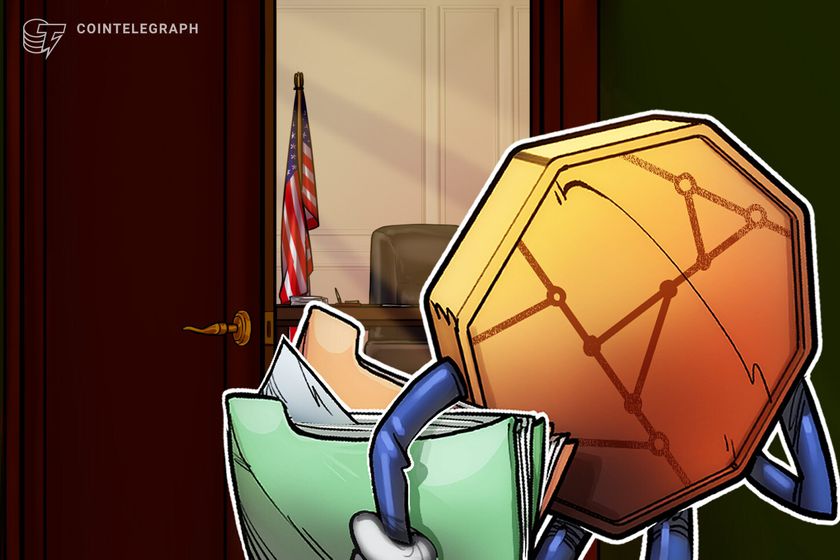The GENIUS Act isn’t about banks vs crypto, here’s how both seize to benefit | Opinion
Disclosure: The views and opinions expressed here belong solely to the author and do not represent the views and opinions of crypto.news’ editorial.
The GENIUS Act was supposed to bring clarity to stablecoins, and in many ways, it has. For the first time, there’s a clear federal framework: issuers now have to fully collateralize their coins with safe assets, maintain transparent reserves, and they cannot pay yield directly to customers. After years of uncertainty, this kind of clarity is huge, but it has also caused heads to butt.
- Banks fear stablecoins will drain deposits, but history shows financial systems adapt — just like in the 1980s with money market funds.
- Instead of resisting, banks could issue their own stablecoins, modernize payments, and strengthen balance sheets.
- Clear regulation (GENIUS & CLARITY Acts) is critical — ensuring AML/KYC, compliance, and consumer protection.
- Community banks stand to gain the most, using stablecoins to compete with big institutions and offer faster, cheaper services.
As soon as the ink dried, the pushback began. Banks lobbied and raised alarms over a loophole that could place their business at a disadvantage. Under the new law, banks can issue stablecoins, but with no interest. Meanwhile, crypto exchanges can still provide rewards or yield on stablecoins issued by third parties like USDC (USDC) or Tether (USDT). Banks argue this could be the start of a mass exodus of trillions of dollars in deposits, giving the power to crypto platforms, starving institutions of funds for loans, and raising borrowing costs.
If that sounds familiar, it’s because we’ve seen this play out before. In the 1980s, money market funds offered better rates than bank accounts. Depositors moved, banks felt the pinch, and the financial system adjusted. Stablecoins present a similar shock today. They’re faster, cheaper, more transparent, and, if designed properly, safer. The question is whether banks will adapt this time or if they’ll dig in their heels.
Why banks don’t have to lose
Fears and lobbying strikes aside, banks don’t have to lose against crypto. Banks can modernize their services by issuing their own stablecoins without undermining their current business. Instead of being stuck with costly wire transfers that take days to execute, banks could settle transactions in an instant and integrate them across lending, payments, and even cross-border services. When done right, stablecoins could strengthen their balance sheets, diversify revenues, and keep customers locked in for the long term.
The fear of a mass “deposit flight” rests on the assumption that people want to leave banks. In reality, customers don’t want to pull out. The true need is wanting better options. Stablecoins can give banks those tools if they’re willing to use them.
The role of regulation
But none of this works without clear regulation, which is why the GENIUS and CLARITY Acts matter. Stablecoins need rules around reserves, definitions around compliance, and consumer protections in place, just like any other banking product.
Therefore, establishing anti-money laundering standards will be key. Stablecoins move at the speed of the internet, so compliance systems need to match that speed. Banks and exchanges will need stronger KYC, better transaction monitoring, and tailored suspicious activity reporting. This isn’t impossible; the technology already exists. The condition will be for regulators and institutions to work closely so that the framework is both safe and usable.
Community bank plays
Above all, community banks gain the most from stablecoin integration. Smaller institutions have long struggled to compete with the scale and access afforded to big national institutions, but stablecoins can level the playing field. Imagine going to your local bank to complete an international transaction in minutes instead of weeks with less cost. Rather than being left in the dust, community banks can leverage stablecoins to strengthen customer relationships and stay competitive in a market fueled by digital solutions.
Stablecoins are ultimately programmable money that can plug into decentralized finance, tokenized assets, and real-time settlement systems. It’s more than a play that boosts crypto exchanges, but one that can positively impact everything from remittances to trade finance to the U.S. Treasury demand. Treasury Secretary Scott Bessent has also signaled that stablecoins could become a meaningful source of demand for government bonds.
The debate is no longer about whether stablecoins matter, but who will lead their integration into the financial system. For community banks, they may be the bridge that keeps them relevant and standing toe-to-toe in the future of finance.
Can banks and crypto work together?
Right now, the fight comes down to control. Banks want to protect their turf, and crypto companies want to preserve their first-mover advantage. The longer these two pull in opposite directions, though, the more both risk missing the opportunity altogether.
If banks keep fighting stablecoins instead of adopting them, they risk being left behind, and crypto players must play active roles in how we regulate the space for the greater good. The path forward isn’t about exploiting loopholes or lobbying against one another, but rowing in the same direction. The sooner we do, the sooner we can deliver faster, safer, and more inclusive financial services that meet the expectations of the world we live in today.
You May Also Like

The dollar is down over 10% in 2025, heading for its worst year since 1973

Crypto execs met with US lawmakers to discuss Bitcoin reserve, market structure bills

